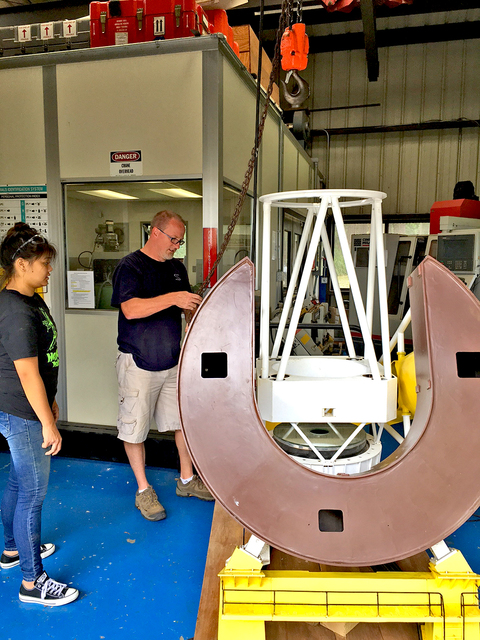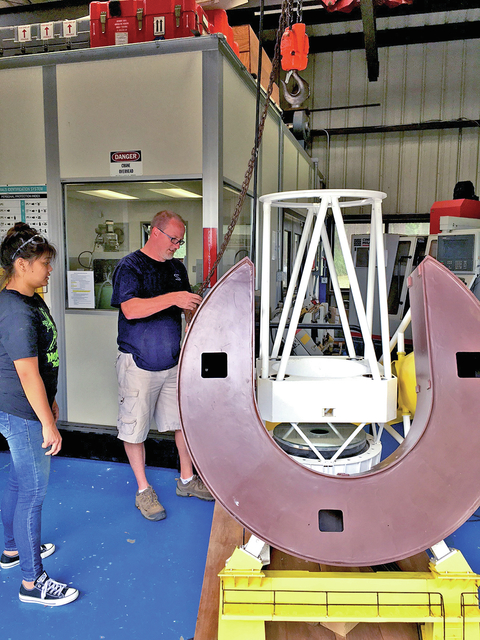“So, what are you doing this summer?” is one of the most commonly asked questions students are asked when walking out of their final exams. But instead of replying with a casual shrug of the shoulders, Hawaii residents Nicole Tabac,
“So, what are you doing this summer?” is one of the most commonly asked questions students are asked when walking out of their final exams. But instead of replying with a casual shrug of the shoulders, Hawaii residents Nicole Tabac, Kyle Mauri and Daryl Albano had the unique opportunity to proudly say, “I’m a Canada-France-Hawaii Telescope Akamai intern.”
While these students are akamai by every stretch of the word, they are among 30 college students interning in STEM related organizations throughout the Big Island and Maui as a part of the Akamai Internship Program.
The program’s mission is to provide college students the opportunity to gain work experience at an observatory, company or technical facility in Hawaii for seven weeks.
It has had tremendous success, with an 81 percent retention rate of students staying on the STEM pathway in college and beyond.
The program includes housing, travel fees and a stipend to interns. Such is possible through generous funding from sponsors such as Thirty Meter Telescope International Observatory and The Air Force Office of Scientific Research based in Arlington, VA.
Yet, unlike other similar internships, the program has a variety of sites and jobs available for each student based on their aptitudes and interests. The list includes more than 50 different fields of STEM ranging from biology to computer programming.
Students are placed with a project and mentor that best suits their interests, according to Canada-France-Hawaii Telescope’s outreach program manager, Mary Beth Laychak.
“You want to make sure the intern, mentor and project are all very well aligned,” she said. “And that’s something that Lisa Hunter, the coordinator for Akamai, and her team really excel at.”
Based on their applications, Tabac, Mauri and Albano will spend the next month completing intensive projects specific to CFHT.
With an inclination towards design, Tabac, a Honokaa High School graduate and Northern Arizona University mechanical engineering student, has spent the last two weeks constructing a scale model of a telescope found atop Mauna Kea.
“We are trying to integrate a planetarium software that allows the model to move and locate stars,” she said. “So, it actually has the same position as a real telescope that looks at a particular star.”
Mauri, a Maui resident attending Colorado State University studying mechanical engineering, is working on a replacement declination pin for the telescope as the current pin leaves room for error.
“It’s supposed to be perfect zenith, but it’s a tenth-of-a-degree off,” he explained as the smallest of errors can lead to cylinders leaking and equipment thus failing on summit.
University of Hawaii at Hilo junior Albano displays his passion for computer science with his fluency in software titles and code language while explaining the importance of the assets management system.
“The goal is to create a database to keep track of all these computers and IT equipment with the intention of later expanding it to other equipment at the summit,” he said.
The five-day work week can seem challenging for the interns, but the starry-eyed students speak highly of the program benefits. Tabac and Albano agree that the opportunity to work currently in the careers they hope to pursue in Hawaii is a highlight of the program.
“Before, there were hardly any opportunities for STEM majors in Hawaii,” Tabac said. “But now it feels like more of a possibility to come back to Hawaii and work.”
Mauri feels that the program is giving him the skills needed for the job he’s always dreamed of.
“Basically I showed up and didn’t know what to do,” Mauri admitted. “I had no idea how to use what you know in a workplace to get the job done. Now I know if I did this job every day, I’d be pretty happy.”




